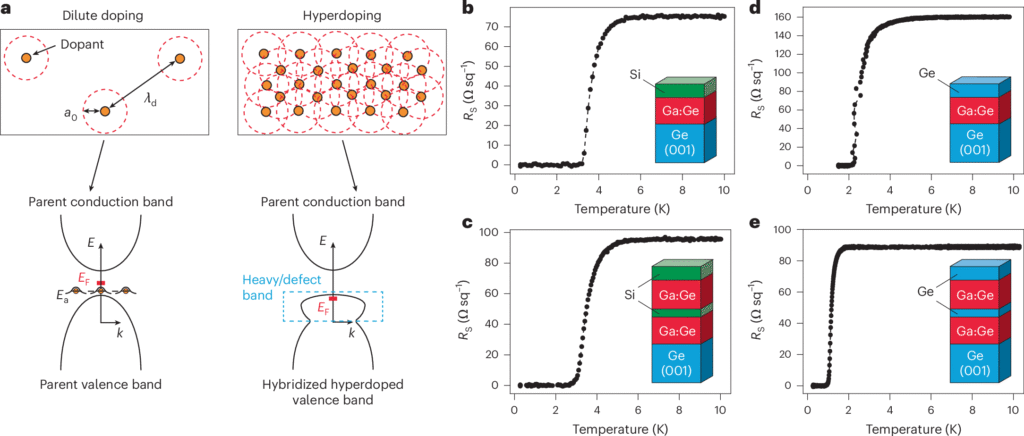An international team of scientists has successfully produced a form of germanium (Ge) that exhibits superconductivity, a significant advance for quantum and cryogenic electronics. The research, published in Nature Nanotechnology, reports producing films that are able to conduct electricity with zero resistance at 3.5 Kelvin. The breakthrough addresses the challenge of achieving superconductivity in semiconductor materials by maintaining an optimal atomic structure with the desired conduction behavior.
The creation of the material utilized molecular beam epitaxy (MBE) to grow hyperdoped Ga:Ge films, precisely incorporating gallium (Ga) atoms substitutionally within the Ge crystal lattice. This process overcame the typical structural instability encountered at high doping levels. Synchrotron-based X-ray methods and first-principles calculations confirm that this structural order creates a narrow electronic band for the emergence of superconductivity in Ge.
The resulting material establishes a low-disorder, epitaxial superconductor-semiconductor platform that is suitable for quantum functionalities. Crucially, the material stack enables the creation of Josephson junction structures using super-Ge (the superconducting germanium) on a wafer-level scale. The researchers noted that this allows for the potential creation of millions of Josephson junction pixels (10 μm square), which are foundational components for superconducting qubits.
The research was led by collaborators including Javad Shabani (NYU) and Peter Jacobson (University of Queensland). The work is intended to enable future quantum circuits, sensors, and low-power cryogenic electronics that need clean interfaces between superconducting and semiconducting regions. The research was supported, in part, by the US Air Force’s Office of Scientific Research.
Read the full announcement from NYU here and the paper, “Superconductivity in substitutional Ga-hyperdoped Ge epitaxial thin films,” in Nature Nanotechnology here.
October 30, 2025
